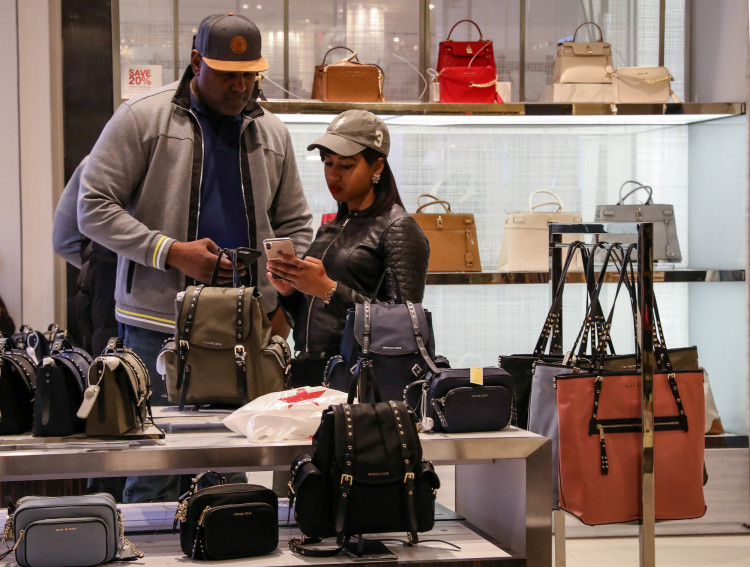The United States witnessed a stable inflation performance in November, as decreases in the costs of gasoline and durable goods largely offset increases in housing, transportation, and other services prices.
Data released by the Labor Department on Tuesday showed that the U.S. Consumer Price Index (CPI) in November rose 3.1% year-over-year, aligning with expectations but slightly slower than the 3.2% increase in October. Month-over-month, the CPI grew by 0.1%, slightly above the expected and previous value of 0%.
Excluding the more volatile food and energy components, the core CPI increased by 4% year-over-year, consistent with previous values and expectations, although still above the Federal Reserve's target of 2%. Month-over-month, the core CPI rose by 0.3%, meeting expectations, with the previous value at 0.2%.
Specifically, energy prices fell 2.3% month-over-month in November, helping to curb inflation, with gasoline prices dropping 6% and fuel oil prices decreasing by 2.7%. Driven by a 0.4% rise in dining out prices, food prices increased by 0.2% month-over-month. Year-over-year, food prices rose by 2.9%, while energy fell by 5.4%.
Housing costs, which account for about a third of the CPI weight, rose 0.4% month-over-month and 6.5% year-over-year. Since reaching a peak earlier this year, the annual growth rate of housing costs has been steadily declining.
Despite the slowdown, many prices remain high. Lisa Sturtevant, Chief Economist at real estate brokerage Bright MLS, noted that the decline in inflation does not mean a drop in prices. In fact, almost all goods are still priced higher than pre-pandemic levels, with "housing costs particularly putting pressure on many individuals and families."
After five consecutive months of decline, U.S. used car prices rose 1.6% month-over-month in November, with vehicle insurance increasing by 1% and 19.2% year-over-year. Additionally, medical costs rose by 0.6% month-over-month, while clothing costs fell by 1.3%.
The inflation report comes as the Federal Reserve begins its two-day policy meeting, with the central bank expected to maintain interest rates steady for the third consecutive time. However, the market is more focused on signals from the Fed regarding its future path.
The Fed has raised interest rates 11 times since March 2022, and investors are currently betting that the central bank may start cutting rates as early as next spring. Earlier this month, Fed Chair Jerome Powell stated that it was too early to "speculate on when policy might be relaxed."
Although Fed officials have not indicated they have finished raising rates, there is increasing belief that further hikes are not needed to control inflation. U.S. inflation has shown significant improvement this year. A preliminary survey released by the University of Michigan this month showed that as price increases slowed, consumers' long-term inflation expectations declined, making Americans more optimistic.
Some Fed officials have publicly expressed optimism about the prospects of a "soft landing" for the U.S. economy, meaning reducing inflation without triggering a recession. Fed Governor Christopher Waller said last month that he is "increasingly confident that the current policy stance is appropriate."
U.S. Treasury Secretary Janet Yellen also expressed shortly after the CPI data was released that the U.S. economy is on track for a soft landing. "To me, a soft landing means the economy continues to grow, the labor market remains strong, and inflation comes down. I believe we are on that path," she said at The Wall Street Journal's CEO Council Summit.
Economists have been debating for months whether the U.S. economy can achieve a soft landing. Earlier this year, economists surveyed by The Wall Street Journal unanimously predicted a recession for the U.S. economy, but these expectations have gradually faded over time.
Yellen noted that data shows inflation is moving towards the Fed's 2% target, and the "final mile" may not be particularly difficult.
She said that Americans expect inflation not to persist, which helps the U.S. economy achieve a smooth decline in price increases. In previous inflation periods, Americans expected prices to rise, forcing the Fed to maintain sufficiently high interest rates, leading to unemployment to reduce inflation.
"Long-term inflation expectations have never risen significantly, so we just need to normalize the economy, return the labor market to full employment, and we can reduce inflation," she added.
When asked whether the latest inflation developments might prompt the Fed to start cutting rates from their 22-year high, Yellen declined to comment. However, she mentioned that the decline in inflation means that even if the Fed keeps nominal rates unchanged, the real interest rates adjusted for inflation are still rising, which could be a factor affecting the Fed's rate decisions.
After the CPI release, the futures market indicated almost no possibility of further rate hikes, with the first rate cut likely in May next year. According to the Chicago Mercantile Exchange's "FedWatch" tool, there is over a 50% probability that the Fed will significantly ease by the end of next year, cutting rates by as much as 1.25 percentage points.
The Labor Department, in another press release, stated that workers' wages adjusted for inflation have increased, with real average hourly earnings in November rising by 0.2% and up 0.8% from the same period last year.
As the data met expectations, U.S. stock indices closed higher on the day. The S&P 500 index rose by 0.46% to 4643.70 points; the Dow Jones Industrial Average increased by 0.48% to 36577.94 points; and the Nasdaq Composite Index went up by 0.7% to 14533.40 points.
All three major indices reached new 52-week intraday highs, with the S&P 500 index hitting its highest intraday level since January 2022. The Dow and the tech-heavy Nasdaq, respectively, reached their highest intraday levels since January and April of last year.






